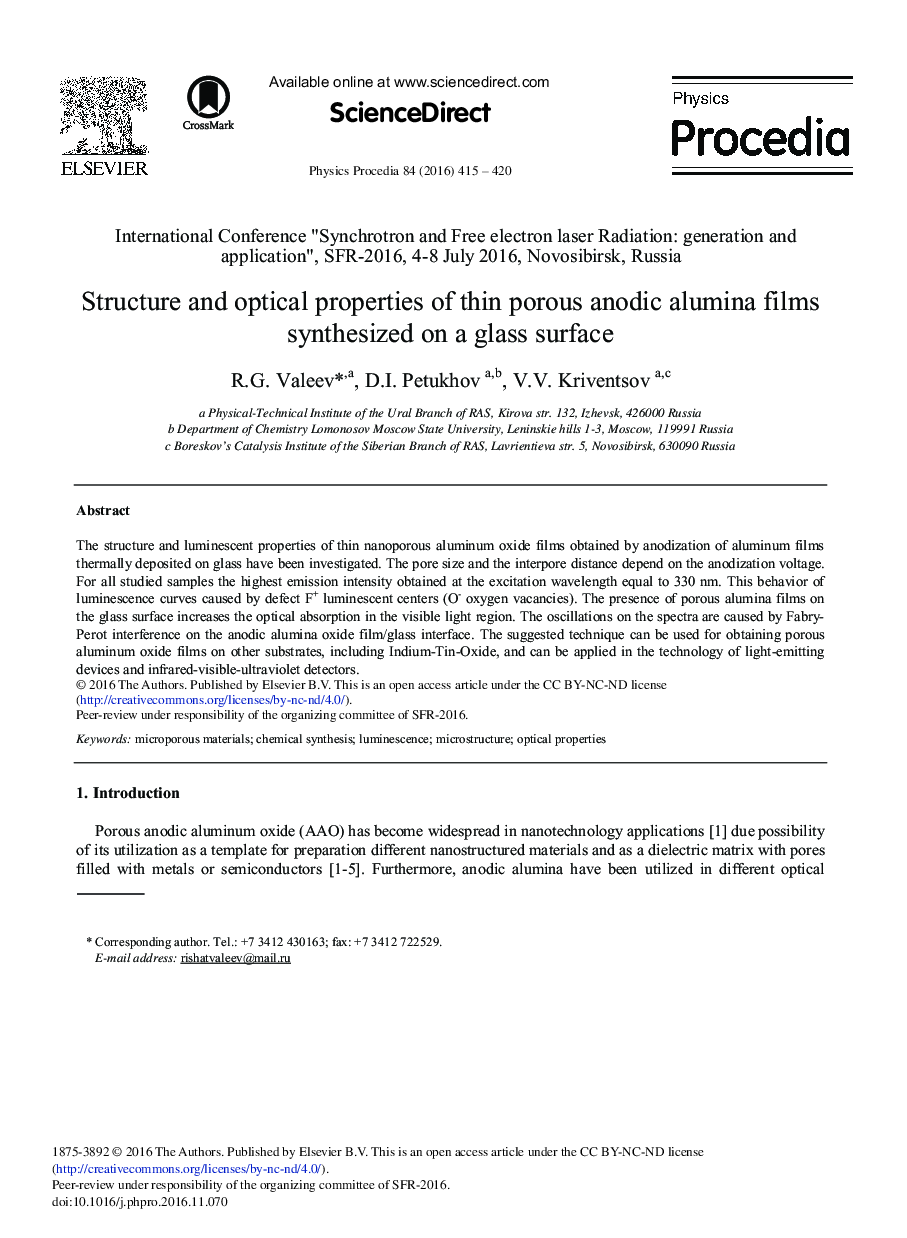| Article ID | Journal | Published Year | Pages | File Type |
|---|---|---|---|---|
| 5497307 | Physics Procedia | 2016 | 6 Pages |
Abstract
The structure and luminescent properties of thin nanoporous aluminum oxide films obtained by anodization of aluminum films thermally deposited on glass have been investigated. The pore size and the interpore distance depend on the anodization voltage. For all studied samples the highest emission intensity obtained at the excitation wavelength equal to 330 nm. This behavior of luminescence curves caused by defect F+ luminescent centers (Oâ oxygen vacancies). The presence of porous alumina films on the glass surface increases the optical absorption in the visible light region. The oscillations on the spectra are caused by Fabry-Perot interference on the anodic alumina oxide film/glass interface. The suggested technique can be used for obtaining porous aluminum oxide films on other substrates, including Indium-Tin-Oxide, and can be applied in the technology of light-emitting devices and infrared-visible-ultraviolet detectors.
Related Topics
Physical Sciences and Engineering
Physics and Astronomy
Physics and Astronomy (General)
Authors
R.G. Valeev, D.I. Petukhov, V.V. Kriventsov,
